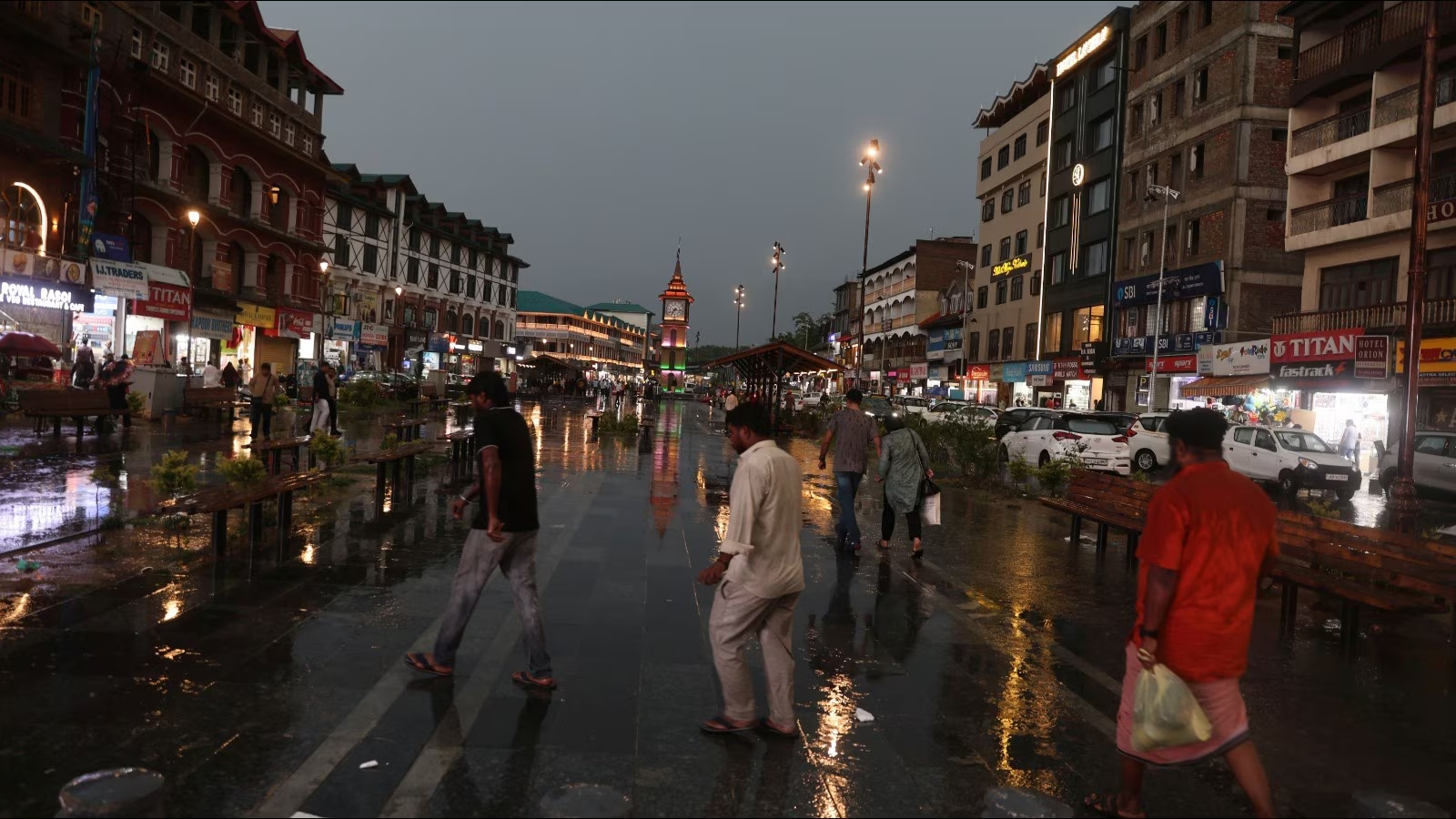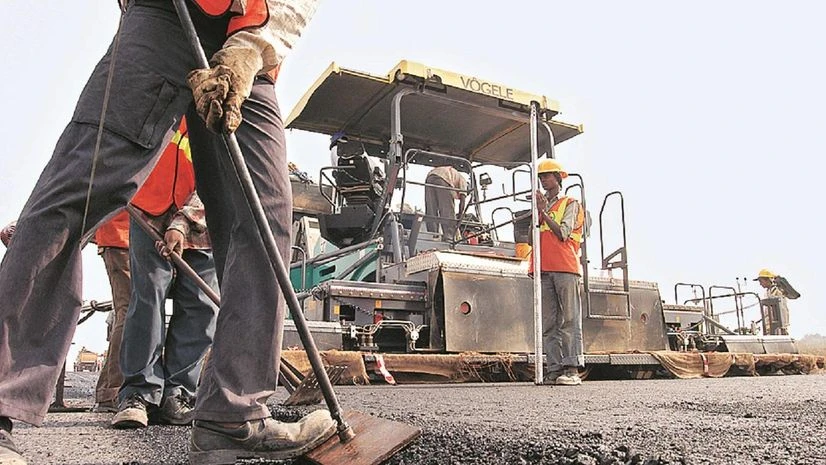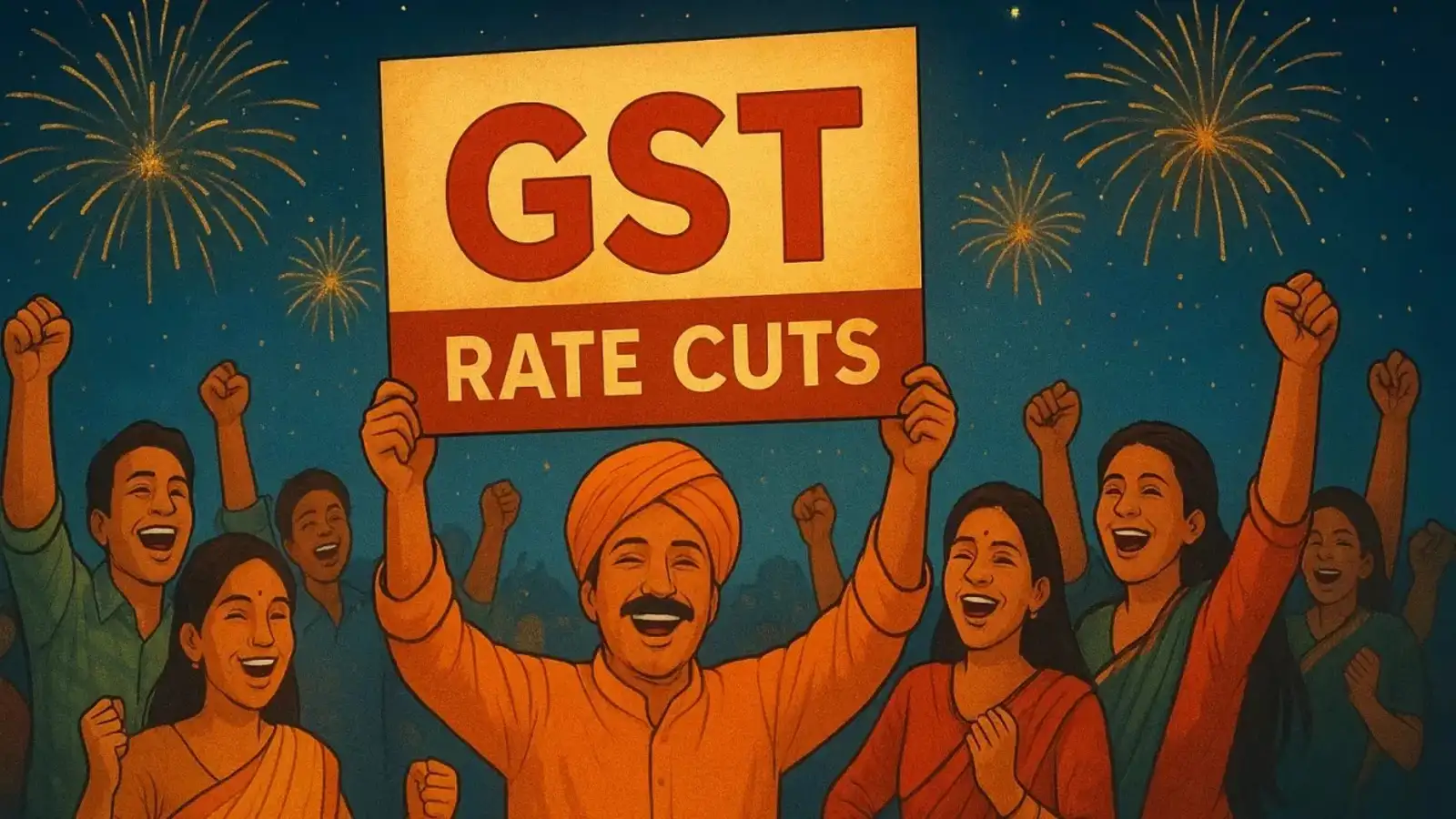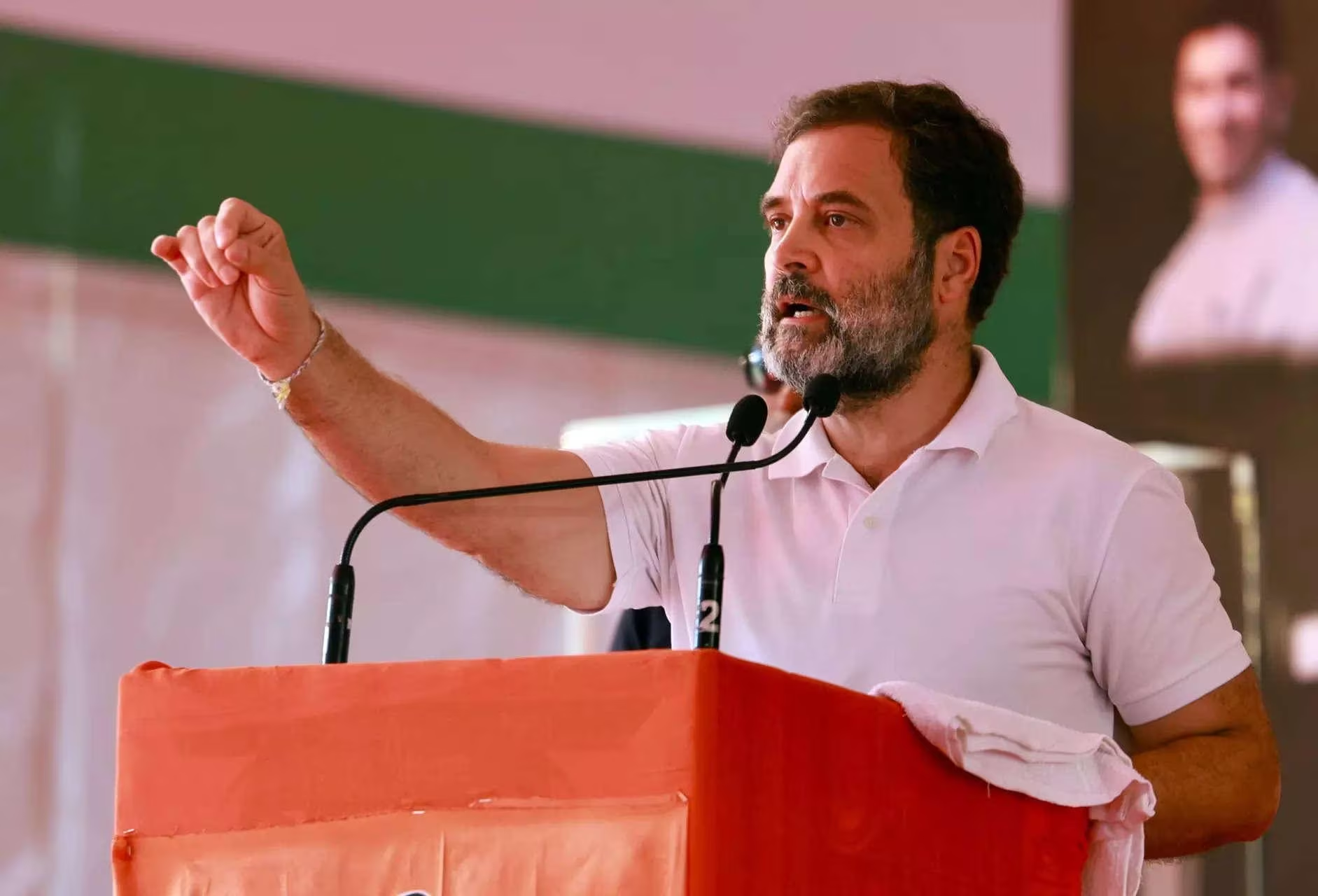Top Trending Government News News & Highlights


Twenty-seven Maoists in Sukma, Chhattisgarh, surrender
According to the police, up to 27 active Maoists with a combined reward of ₹50 lakh turned themselves in to the Sukma district on Wednesday, October 15, 2025.This comes a day after 60 other cadres and senior Naxalite Mallojula Venugopal Rao, also known as Bhupathi, surrendered in the Gadchiroli district of Maharashtra. The government's determination to abolish Naxalism, which is mostly centered in the Bastar area of Chhattisgarh, by March 31, 2026, has been emphasized by Union Home Minister Amit Shah.Ten women were among the 27 Naxalites who gave up in Chhattisgarh on Wednesday. They surrendered in front of Central Reserve Police Force officials and top police officers. According to Sukma Superintendent of Police Kiran Chavan, they expressed dissatisfaction with the "hollow" Maoist doctrine, crimes carried out by Naxalites on defenseless tribal people, and the increasing power of security forces. The Chhattisgarh government's 'Niyad Nellanar' initiative, which aims to facilitate development projects in rural communities, and the state's new surrender and rehabilitation policy also impressed the cadres, he said.According to the official, Oyam Lakhmu, a member of battalion no. 1 of the Peoples' Liberation Guerrilla Army, which was regarded as the most formidable Maoist military unit, was carrying a bounty of ₹10 lakh on his head. Three more According to him, Madvi Bhima, a party member in PLGA battalion no. 1's military platoon unit, Sunita, also known as Kawasi Somdi, and Sodi Mase, who were both members of regional military company no. 2, each held a ₹8 lakh reward. Additionally, he stated that a cadre held a prize of ₹3 lakh, two cadres held a bounty of ₹2 lakh each, and nine cadres held a reward of ₹1 lakh apiece.He stated that all of the Naxalites who turned themselves in received ₹50,000 in aid apiece and would receive additional rehabilitation in accordance with government policy.
Published 15 Oct 2025 05:10 PM


J&K: Srinagar erlebt teils heftigen Regen, IMD sagt Gewitter und starken Wind voraus
Heavy rainfall affected various areas of Srinagar city in Jammu and Kashmir, resulting in a temperature drop.The India Meteorological Department has predicted that the city will experience "Heavy Rainfall, Light to Moderate Rainfall, Thunderstorm accompanied with lightning & gusty winds(30-40kmph)" today.Previously, the Jammu and Kashmir government had instructed schools in the Jammu division to close due to the Indian Meteorological Department's prediction of heavy rainfall in this region. The government-issued circular states that all private and government schools in Jammu will be closed from October 6 to 7. In the Rajouri region, considerable damage was inflicted by intense rainfall that occurred earlier. Residents encountered difficulties because of compromised houses, roads that had sunk, and ruined harvests. Moreover, numerous rain-induced landslides have obstructed various routes within the district.In the meantime, torrential rains in North Bengal caused landslides and serious waterlogging, leading to significant destruction, road obstructions, and fatalities in multiple districts, such as Darjeeling and Jalpaiguri. District authorities confirmed on Monday that at least 18 people were reported killed in Darjeeling due to incessant rain that caused devastation in northern West Bengal on Saturday night and early Sunday. Read more at:
Published 06 Oct 2025 05:40 PM


152 road segments in Delhi will receive significant renovations once the Center approves a Rs 803 crore investment.
With the Center accepting the Delhi government's proposal for Rs 803 crore in funding, 152 important sections, including the Ring Road and other flyovers, totaling more than 330 km throughout the Capital, are scheduled to undergo a significant makeover that includes repair, reconstruction, and resurfacing.According to officials, the Central Road and Infrastructure Fund (CRIF) money were granted earlier this month by the Minister for Road Transport and Highways (MoRTH), who also requested administrative approval for the projects from the Delhi government. The MoRTH's CRIF program gives states and Union territory money to build and maintain important roads and infrastructure."Delhi is witnessing a new era of infrastructure development," stated Parvesh Sahib Singh, Minister of the Public Welfare Department (PWD). Roads are the lifeblood of any contemporary city, and by fortifying these vital thoroughfares, we are guaranteeing millions of commuters' safety, speed, and sustainability every day."This project aims to build top-notch urban infrastructure that fulfills the dreams of all Delhiites, not just fix roads," he continued.PWD officials insisted that this "project will take the Capital a giant step closer to the vision of a Viksit Delhi" and that the city would see one of the most comprehensive road upgrade and infrastructure development programs in recent years. Roads in the Central, North, East, Northeast, Shahdara, and Northwest districts will be upgraded, new corridors will be built, flyovers will be developed, and roads will be strengthened, resurfaced, and widened, according to officials.The Kashmiri Gate ISBT to Wazirabad, Vikas Marg, ITO circle, Ferozshah road, and the Nizamuddin to Kalkaji stretch are some of the important sections that will undergo repairs and improvements. Another important route that will be extended is the Noida Link Road, which links Noida to Central and East Delhi.In order to relieve traffic and enhance connectivity in Outer, West, and Northeast Delhi, the PWD also intends to build three new flyovers at the Rajouri Garden-Tagore Garden stretch, Rohtak Road (Military Road–Jhansi Road), and on Road 63 and Gokulpuri stretch. The letter from MoRTH to the Delhi Chief Secretary said, "The competent authority in this ministry has agreed to approve the work listed to an amount of Rs 803.39 crore to meet the cost of work debitable to the Government of NCT of Delhi's allocations under the CRIF Act, 2000."
Published 10 Sep 2025 08:48 PM


The government lowers GST on frequently used goods; the new rates will take effect on this month's 22nd.
The government has lowered the GST on a number of goods in various categories. The GST reduction rate will take effect on this month's 22nd. Finance Minister Nirmala Sitharaman told reporters in New Delhi today that the GST on goods used by the average person and middle class has been lowered from 18% or 12% to 5%. Hair oil, toilet soap, soap bars, shampoos, toothbrushes, toothpaste, bicycles, dinnerware, kitchenware, and other home items would now only be subject to 5% GST, the Finance Minister announced.She added that the GST rate on paneer, chena, and ultra-high temperature milk has been lowered from 5% to 0%, while the GST rate on all Indian breads would now be 0%. Additionally, Ms. Sitharaman declared that the GST on the following food items has been lowered from 12 or 18 percent to 5 percent: namkeen, bhujia, sauces, pasta, instant noodles, chocolates, coffee, preserved meat, cornflakes, butter, and ghee.The Minister further stated that the GST slab has been reduced from 28% to 18% for commodities such as air conditioners, televisions larger than 32 inches, all TVs, dishwashing machines, small cars, and motorbikes. According to her, labor-intensive businesses have provided substantial support, and today's measures will also benefit farmers and the agriculture industry. According to the Minister, the GST rate on all agricultural equipment has been lowered from 12% to 5%. Regarding the automobile industry: #GST on small cars and motorcycles up to 350 cc was lowered from 28% to 18%. # The GST on ambulances, buses, and vehicles was lowered from 28% to 18%. # GST on three-wheelers was lowered from 28% to 18%. # All auto parts were subject to a uniform 18% rate. GST reduction on medical supplies: #33 life-saving medications now have a 12% GST reduction instead of a 0% one. # Three life-saving medications used to treat cancer, rare diseases, and other serious chronic illnesses now have GST cut from 5% to 0%. # GST on certain medications was lowered from 12% to 5%.
Published 04 Sep 2025 09:45 PM


Government News
Government News & Trends where we share you the latest updates under the government authorities globally starting from India to USA, China, Russia, Pakistan, UK and many more nations.


2024 Bajaj Chetak review, first ride
Where every other electric scooter in the mainstream has aspired to carve a niche for itself in the market as a futuristic next-generation mobility solution, Bajaj has attempted to authentically replicate an experience in electric with their Chetak. The all-metal body, the rounded design and the minimal technological intervention. All of which meant that up until now the Chetak was left to an ever-diminishing demographic of people familiar with the original Chetak. For 2024, without really making too many big changes, Bajaj has upped their ante and expanded the reach of the updated bike to new demographics with a slight rejig of the equipment list.But before we jump into what's new. Let us talk about the design and build of the new Chetak for a second. The design hasn’t changed from the first generation of the Chetak. The rounded fascia with the round headlamp and the svelte body section set in an all-metal body make for a very premium-feeling scooter. It also gets all LED lighting as standard. However, while the build on the paint and the bodywork do feel premium, the plastics and the body mouldings do seem a little off-brand for the premium electric scooter. Switchgear, though, is a premium touch and feels solid, although we did notice a few times when buttons on the instruments would not respond momentarily. But before we jump into what's new. Let us talk about the design and build of the new Chetak for a second. The design hasn’t changed from the first generation of the Chetak. The rounded fascia with the round headlamp and the svelte body section set in an all-metal body make for a very premium-feeling scooter. It also gets all LED lighting as standard. However, while the build on the paint and the bodywork do feel premium, the plastics and the body mouldings do seem a little off-brand for the premium electric scooter. Switchgear, though, is a premium touch and feels solid, although we did notice a few times when buttons on the instruments would not respond momentarily.


Hyundai Creta 2024 facelift vs Kia Seltos vs Maruti Suzuki Grand Vitara vs others: Price comparison
India Today was the first news organisation to confirm that Hyundai Motor India will launch the Hyundai Creta facelift in the country in 2024. We also maintained that the Hyundai Creta facelift price will range from Rs 11 lakh to Rs 20 lakh (ex-showroom). Well, it seems that we are bang on the target so far as the price of the vehicle is concerned.Among the other rivals, the Elevate's price ranges from Rs 11.58 lakh to Rs 16.40 lakh (ex-showroom), the Urban Cruiser Hyryder's price from Rs 11.14 lakh to Rs 20.19 lakh (ex-showroom), that of the Kushaq from Rs 11.89 lakh to Rs 20.49 lakh (ex-showroom), the price of the Taigun from Rs 11.70 lakh to Rs 20 lakh (ex-showroom) and the Astor from Rs 9.98 lakh to Rs 17.90 lakh (ex-showroom). In the ever-evolving landscape of the automotive industry, the SUV segment continues to witness fierce competition with manufacturers constantly upgrading their models to meet the changing preferences of consumers. In this comparison, we will focus on the recently launched Hyundai Creta 2024 facelift, the popular Kia Seltos, the established Maruti Suzuki Grand Vitara, and a few other noteworthy contenders. Let’s delve into the key aspects, specifications, and prices to help you make an informed decision.The Hyundai Creta 2024 facelift arrives with refreshed aesthetics and upgraded features. Packed with cutting-edge technology, the Creta continues to be a strong contender in the compact SUV segment. The price for the base variant starts at $XX,XXX, making it a competitive option in its class.The Kia Seltos, known for its stylish design and feature-packed interior, remains a top choice for SUV enthusiasts. With a starting price of $XX,XXX, the Seltos offers a compelling mix of performance and comfort. Its diverse range of engine options and trim levels allows buyers to tailor their purchase according to their preferences.


JLR India launches Discovery Sport 2024 at Rs 67.90 lakh
JLR India today launched the Discovery Sport 2024 in the country at a starting price of Rs 67.90 lakh (ex-showroom). The 2024 model comes with a price cut of Rs 3.49 lakh over the 2023 model.The Discovery Sport 2024 is available in Dynamic SE with two engine options - 2.0-litre petrol (245hp and 365Nm) and 2.0-litre Ingenium diesel (201hp and 430Nm). Both engines are mated to an automatic transmission. The new Discovery Sport gets subtle exterior updates. There is a contrast roof and exterior accents, including Discovery script, grille, lower body sills and lower bumpers, all having a distinctive Gloss Black finish. There is Gloss Black front claw detailing on the bumpers and wheel arches. There are 19-inch diamond-cut alloys. The SUV also gets a new Varesine Blue exterior paint option.JLR India today launched the Discovery Sport 2024 in the country at a starting price of Rs 67.90 lakh (ex-showroom). The 2024 model comes with a price cut of Rs 3.49 lakh over the 2023 model. JLR India today launched the Discovery Sport 2024 in the country at a starting price of Rs 67.90 lakh (ex-showroom). The 2024 model comes with a price cut of Rs 3.49 lakh over the 2023 model.The new Discovery Sport gets subtle exterior updates. There is a contrast roof and exterior accents, including Discovery script, grille, lower body sills and lower bumpers, all having a distinctive Gloss Black finish. There is Gloss Black front claw detailing on the bumpers and wheel arches. There are 19-inch diamond-cut alloys. The SUV also gets a new Varesine Blue exterior paint option.You now get a digital instrument cluster and steering wheel-mounted gearshift paddles as standard, while the redesigned centre console boasts a new floating 11.4-inch curved glass touchscreen. The latest Pivi Pro infotainment set-up features permanently accessible sidebars, which provide shortcuts to key vehicle controls and functions, such as media, volume, climate and navigation. There is a panoramic glass roof as well.The SUV has wireless Apple CarPlay and Android Auto as standard and a wireless charger. A natural shadow oak trim finisher surrounds a new gear shifter. Discovery Sport Dynamic SE features DuoLeather interiors with up to two colour options.


Assam govt threatening people not to join Cong yatra, says Rahul Gandhi
Congress leader Rahul Gandhi on Sunday alleged that Assam's BJP-led government has been threatening people against joining the Bharat Jodo Nyay Yatra, and refusing permissions for programmes along its route.People, however, are not afraid of the BJP, Gandhi asserted at a public gathering in Biswanath Chariali, the headquarters of Biswanath district.He also said the Congress will win by a huge margin against the BJP in the upcoming elections."We don't make long speeches as part of the yatra. We travel every day for 7-8 hours, talk to delegations, meet people and listen to their issues. And then, we fight for your issues; that is the aim of this yatra."When elections come, Congress will defeat BJP by massive margins," Gandhi asserted, urging party workers to march forward despite being threatened, and beaten up, as the fight is for the people.The yatra is in its fourth day in the state, having re-entered after a night halt in Arunachal Pradesh. It is scheduled to travel through Assam till January 25, covering a total of 833 km across 17 districts.Gandhi also alleged that flags and banners of the Congress are being damaged in the state."They (government) think they can threaten the people and suppress them. But, they are not realising this is not Rahul Gandhi's yatra. It is a yatra for the voice of the people," he said."Neither Rahul Gandhi nor people of the state are afraid of them," the former Congress chief said.He continued to target Assam Chief Minister Himanta Biswa Sarma, terming him as the most corrupt CM in the country."Everyone knows that the CM and his entire family are the most corrupt. The Assam government is run for the benefit of one family... the Congress MP alleged.He said that injustice was being done to farmers, who don't get the price for their produce, youths who don't find jobs after finishing studies and traders who bore the brunt of demonetisation and GST.


Budget 2024-25: Govt may increase capex to propel economic growth
With private investment still muted, the government is likely to maintain its momentum on increasing capital expenditure, especially for the infrastructure sector in the upcoming Budget to propel economic growth.Post Covid-19, the Budget has been laying special emphasis on capex. It has kick-started a dormant cycle for the economy. As a result India has witnessed over 7 per cent growth in the last three years, the highest among the large economies of the world. During the current financial year, the government has made a record high provision of Rs 10 lakh crore towards capex. During 2020-21, the government earmarked Rs 4.39 lakh crore which increased by 35 per cent to Rs 5.54 lakh crore in the subsequent year.Another 35 per cent hike in capex was done in 2022-23 to Rs 7.5 lakh crore which subsequently reached a high of Rs 10 lakh crore, an increase of 37.4 per cent.In the upcoming Budget too, the government is expected to earmark a large amount towards capex as such investment has a multiplier effect on the economy and it also crowds in private investment."We estimate Government of India to budget for a capex of Rs 10.2 lakh crore in FY25, implying a relatively sedate YoY expansion of about 10 per cent, compared to over 20 per cent expansion seen in each of post-COVID years. The slowdown in capex growth is likely to have some bearing on economic activity and GDP growth," Icra said in its pre-Budget expectations. The capex rose by 31 per cent to Rs 5.9 lakh crore in April-November of the current fiscal (58.5 per cent of FY2024 BE) from Rs 4.5 lakh in April-November FY23 (60.7 per cent of FY23 Prov).While the growth remained high, capital spending contracted in October 2023 (-14.9 per cent; first instance of contraction since April 2023) and then rose by a marginal 1.6 per cent in November 2023. Moreover, it has averaged at Rs 73,210 crore/month, 12.2 per cent lower than the required monthly average of Rs 83,400 crore to meet the budgeted target of Rs 10 lakh crore.India is a hugely infra deficit country and heavy lifting in this regard is being done by the government which crowds in private investment. With the growth in the economy, there has been a pick-up in private investment in recent times in some of the sectors like steel, cement and petroleum sector.According to Emkay Global Financial Services head research Seshadri Sen, capex by the government would continue and it will happen at a faster pace.The capex would help unlock the virtuous cycle. Investment leading to productivity growth, job creation, demand and exports feed into each other and enable animal spirits in the economy to thrive.


Sensex, Nifty tick higher after a 3-day drop; IRFC, Network 18 jump up to 5%
The 30-share BSE Sensex surged 635 points or 0.89 per cent to trade at 71,822, while the NSE Nifty was up 169 points or 0.79 per cent to trade at 21,631. Indian equity benchmarks were up in Friday's early trade following a three-day losing streak, led by gains across all sectors. The 30-share BSE Sensex surged 635 points or 0.89 per cent to trade at 71,822, while the NSE Nifty was up 169 points or 0.79 per cent to trade at 21,631. Broader markets (mid- and small-cap shares) were positive as Nifty Midcap 100 rose 0.83 per cent and small-cap gained 0.95 per cent. On the global front, Asian markets opened higher, tracking an overnight rise in Wall Street equities.Back home, foreign institutional investors (FIIs) sold Rs 9,901.56 crore worth of shares on a net basis during the previous session, while domestic institutional investors (DIIs) bought Rs 5,977.12 crore worth of shares, exchange data showed. All the 15 sector gauges -- compiled by the NSE -- were trading in the green. Sub-indexes Nifty Financial Services and Nifty IT were outperforming the NSE platform by rising as much as 1.01 per cent and 1.22 per cent, respectively.On the stock-specific front, Tech Mahindra was the top gainer in the Nifty pack as the stock soared 2.74 per cent to trade at Rs 1,392.3. Wipro, Coal India, HCL Tech and TCS rose up to 1.92 per cent. In contrast, IndusInd Bank was the top loser on Nifty50. The overall market breadth was strong as 2,411 shares were advancing while 400 were declining on BSE.On the 30-share BSE index, ICICI Bank, HDFC Bank, Infosys, TCS, Axis Bank, ITC, L&T, Airtel and Titan were among the top gainers.Also, BSE 500 stocks such as IRFC, Network18, Home First Finance, IndiaMART, Poonawalla Fincorp, HUDCO and ITI moved up to 5.33 per cent higher. On the other hand, Shoppers Stop, Metro Brands, Dixon Technologies, Polycab India, ZEE, Cholamandalam Finance and Alembic Pharma slipped up to 3.78 per cent.


Paytm Credit Card on UPI enables effortless daily transactions like payments on grocery stores, chai shops
With just a smartphone, users can easily make UPI payments via credit cards on the Paytm app, powered by Paytm Payments Bank. The convenience of digital transactions have become a fundamental aspect of our daily lives in today’s fast paced world. One such transformative force in the digital payment landscape is the integration of UPI payments through credit cards on the Paytm app. Making small payments of ₹10 to ₹100 bucks through credit at your nearby Kirana stores or a local chai shop or even a chat shop has evolved into the ultimate and convenient payment method for users. This groundbreaking feature offers users the convenience of utilizing credit for routine payments, eliminating the need to rely solely on savings accounts and carrying the card everywhere. With just a smartphone, users can easily make UPI payments via credit cards on the Paytm app, powered by Paytm Payments Bank. Users simply need to link their Rupay Credit Card to UPI through a straightforward process with quick and easy steps. The Credit Card on UPI feature allows users to scan merchant QR codes, allowing them to earn reward points with every transaction.With millions of merchants now accepting payments via credit cards on UPI, this can have a significant impact on the payment landscape. This integration of RuPay Credit Cards on UPI not only expands credit card usage for customers but also supports merchants in the credit ecosystem through assets like QR codes. The increasing acceptance of RuPay credit cards on UPI contributes to financial inclusion, benefiting merchants and businesses across India. Paytm Payments Bank remains at the forefront of innovation, driving the adoption of UPI payments with credit cards, and envisions a future where this technology reshapes the dynamics of the payment ecosystem in India.


Delhi-NCR stays in fog grip: Many trains, flights delayed, no respite till Jan 21
Dense to very dense fog and cold day to severe cold day conditions are likely to continue to prevail over North for the next 2 days (Jan 21) and then decrease in intensity.Fog update: Respite will have to wait for several parts of North India reeling under chilling cold wave conditions along with dense fog that has disrupted rail and air traffic for the past few weeks. Maximum temperatures have dropped below normal by 5-8 degrees Celsius since December. There was a brief respite on January 7 and 8, owing to a passing western disturbance but cold conditions returned from January 9. Dense to very dense fog and cold day to severe cold day conditions are likely to continue to prevail over North for the next 2 days (Jan 21) and then decrease in intensity. Cold wave and dense fog conditions are likely to prevail over Delhi, Punjab, Haryana, Chandigarh and Uttar Pradesh and Rajasthan and at isolated places over Himachal Pradesh, and Uttarakhand, according to the forecast by the India Meteorological Department (IMD)."Dense to very dense fog at a few places in Punjab, Haryana, Chandigarh, Delhi, Uttar Pradesh and Rajasthan and at isolated places over Himachal Pradesh, and Uttarakhand," the weather department said."Cold day to severe cold day conditions at a few places in Uttar Pradesh and Rajasthan and at isolated places in Himachal Pradesh, Uttarakhand, Punjab and Haryana. Cold wave to severe cold wave conditions at a few places in Punjab, Haryana, Chandigarh and at isolated places in Himanchal Pradesh. Ground frost at isolated places in Himachal Pradesh and Uttarakhand," it added. The early-morning foggy weather in Delhi and adjoining areas has significantly impacted road, rail, and air traffic over the past several days. On Friday, at least 22 trains from various parts of the country were running late, and several flight operations were delayed at Delhi's Indira Gandhi International (IGI) airport due to low visibility amid the fog.According to the weather department, minimum temperatures are in the range of 3-6 degrees Celsius over many parts of Punjab and some parts of Haryana-Chandigarh; in the range of 7-10 degrees Celsius over most parts of Delhi, Uttar Pradesh, Rajasthan, north Madhya Pradesh and Bihar.These are below normal by 1 degree to 3 degrees Celsius over many parts of Punjab, Haryana-Chandigarh-Delhi and West Uttar Pradesh and in isolated pockets of Rajasthan.


Removing layers: Sundar Pichai hints at more layoffs at Google in 2024
A day after laying off around 1,000 employees, Google chief executive officer (CEO) Sundar Pichai, on Wednesday, hinted towards more job cuts in the year ahead, The Verge reported. Terming it as part of a larger restructuring plan, Pichai, in an internal memo to Google employees, said, "We have ambitious goals and will be investing in our big priorities this year…the reality is that to create the capacity for this investment, we have to make tough choices."Referring to the "tough decisions", Pichai further said in the memo, "These role eliminations are not at the scale of last year's reductions and will not touch every team. His remark referenced Google's 2023 layoffs when the tech giant fired about 12,000 employees, the biggest layoff in the company's history in a single year.According to the report, Pichai said the layoffs this year were about "removing layers to simplify execution and drive velocity in some areas."Pichai's communication followed a day after Google handed pink slips to around 1,000 employees in the advertising sales team in the first layoff wave of 2024. The company said the eligible employees would receive severance pay. It also offered that the impacted employees may re-apply for open positions in other departments. However, it clarified that those unable to secure a position at the company would be required to exit by April. The developments followed about a week after Google had announced that it would lay off hundreds of people working on its voice-activated Google Assistant software and the company's Devices and Services team.Apart from Google, Jeff Bezos' Amazon also announced last week that it would fire several hundred employees in its streaming and studio operations.Neither company has specified the exact number of job role cuts they are planning in 2024.


HDFC seeks Singapore bank licence to open its 1st branch in the country
HDFC Bank Ltd, India’s biggest private sector lender, is seeking to open its first branch in Singapore, signaling its overseas ambitions after sewing up a landmark merger with mortgage financier Housing Development Finance Corp. last year. The bank has applied to the Monetary Authority of Singapore for a banking licence and is awaiting approval, according to sources familiar with the matter. It is not clear what kind of banking licence HDFC Bank is seeking in Singapore, said one of the people, who declined to be identified as the information is confidential.The banking giant is seeking a bigger presence abroad to tap the Indian diaspora for savings and term deposits, as well as to cross-sell more products, including mortgages, the people said. At home, HDFC has been focusing on deepening its reach in the world’s most populous country through loans to retail customers. HDFC Bank did not respond to an email seeking comment. “As a matter of policy, MAS does not comment on our dealings with financial institutions,” according to a spokesperson from the Singapore regulator.Singapore, with a population of almost 6 million people, houses a large India diaspora. About 650,000 non-resident and persons of Indian origin live in the city-state, according to Indian government data.HDFC Bank is currently not licenced or regulated by the MAS, according to its website. It only provides home loans-related advisory services for the purchase of properties in India, the website states. The categories of banking licences in Singapore encompass full banks, qualifying full banks and wholesale banks, which impose varying levels of restrictions on the lenders’ activities. State Bank of India and ICICI Bank Ltd. hold qualifying full banking licences, alongside eight other banks like Bank of China Ltd. and BNP Paribas SA. Such licences are open only to foreign banks and allow them to have additional branches and/or off-premise ATMs as well as to share ATMs among themselves, according to the Association of Banks in Singapore’s website.The MAS regulates and supervises more than 150 deposit-taking institutions in Singapore, ranging from full banks to finance companies, according to its website. Besides Singapore, HDFC Bank also has presence in markets like London, Hong Kong and Bahrain. The India bank has a total customer base of 93 million at the end of the December quarter compared with 91 million in the preceding three-month period, according to an investor presentation.


Apple expands India presence, opens office covering 15 floors in Bengaluru
US-based technology giant Apple expands its presence in India with a new office in Bengaluru, Karnataka. The new Apple office is located at Minsk Square in the center of the city. In its proximity, there are landmarks buildings and spots such as parliament, high court, central library, Chinnaswamy cricket stadium, and one of the largest green parks within Bengaluru. Covering 15 floors, the new Apple office will house up to 1,200 employees and features a dedicated lab space, areas for collaboration and wellness, and Caffe Macs. Its proximity to Cubbon Park metro station means public transit is easily accessible for employees. "Apple is thrilled to expand in India with our new office in the heart of Bengaluru. This dynamic city is already home to so many of our talented teams, including software engineering and hardware technologies, operations, customer support, and more. Like everything we do at Apple, this workspace is created to foster innovation, creativity, and connection. It’s an amazing space for our teams to collaborate” said Apple.From its Bengaluru office, Apple’s teams will work across a wide range of Apple’s business — from software, hardware, services, IS&T, operations, customer support, and others. In line with Apple's global presence, the new Apple office in Bengaluru boasts an interior crafted from locally-sourced materials, including stone, wood, and fabric in the walls and flooring, and the office is filled with native plants. The office is designed with sustainability at the core – will run on 100 per cent renewable energy. With it Apple aims to achieve a Leadership in Energy and Environmental Design (LEED) Platinum rating — the highest level of LEED certification. Apple has been carbon neutral for its corporate operations since 2020, and has run all Apple facilities using 100 per cent renewable energy since 2018. In India, the company has its corporate office footprint in Mumbai, Hyderabad, and Gurugram, and now in Bengaluru.


Govt may earmark Rs 4 trillion for next years food, fertiliser subsidies
India may earmark about Rs 4 trillion ($48 billion) for food and fertiliser subsidies for the next fiscal year, two government sources said, indicating fiscal caution ahead of this year's general election. Food and fertiliser subsidies account for about one-ninth of India's total budget spending of Rs 45 trillion during the current fiscal year that ends on March 31. The Ministry of Consumer Affairs, Food and Public Distribution has estimated next year's food subsidy bill at Rs 2.2 trillion ($26.52 billion), the two sources said. That is 10 per cent higher than a projected outlay of nearly Rs 2 trillion ($24.11 billion) for the current 2023-24 fiscal year. Additionally, next fiscal year's fertiliser subsidy is expected to be Rs 1.75 trillion ($21.10 billion), down from the current 2022-23 fiscal year estimate of nearly Rs 2 trillion, one of the sources said.The sources, which are directly involved in the decision making on the subsidies, did not wish to be named as they were not authorised to speak to the media.Finance Minister Nirmala Sitharaman will unveil the 2024/25 budget on Feb. The Ministry of Finance, the Ministry of Chemicals and Fertilizers and the Ministry of Consumer Affairs, Food and Public Distribution ministries of finance did not reply to requests for comment. Maintaining the combined subsidies at their current level would be unusual for a government facing a national election in just a few months, but Prime Minister Narendra Modi is widely expected to win a rare third term in elections scheduled for April and May. Also, containing food and fertiliser subsidies is crucial for managing India's fiscal deficit, which Modi's government is targeting at 5.9 per cent of gross domestic product this year and planning to lower by at least 50 basis points in the fiscal year 2024/25. The food subsidy bill is likely to go up next year as Modi's administration late last year extended its flagship free food welfare programme for the next five years.


L&T Technology retains full-year forecast after all units post Q3 growth
Indian tech services provider L&T Technology Services retained its revenue growth forecast for the current financial year on Tuesday as all its five business verticals posted year-on-year growth for the third quarter.This comes as Infosys and HCLTech tightened their revenue guidance for the year last week citing no change in the demand environment for the year, marred by high inflation and clients cutting down on discretionary spending.However, better-than-feared numbers by the top four firms have triggered a rally in IT stocks this week, helping the country's benchmark indices hit fresh lifetime highs. L&T Technology's consolidated net profit rose 3.36 billion rupees ($40.43 million) from 2.97 billion rupees a year earlier, marginally above analysts' estimate of 3.31 billion rupees.Revenue from operations rose 12 per cent to 24.22 billion rupees, on the back of double-digit growth in telecom and medical devices verticals, below analysts' estimate of 24.45 billion rupees.Indian tech services provider L&T Technology Services retained its revenue growth forecast for the current financial year on Tuesday as all its five business verticals posted year-on-year growth for the third quarter.The Mumbai-based firm expects revenue for the current fiscal year ending March 31 to grow 17.5 per cent-18.5 per cent in constant currency."All five segments grew positively for the second quarter in a row giving us 1per cent sequential growth despite the seasonal softness," CEO Amit Chadha said in a statement.Two units - the industrial products segment and Europe region - have scaled a $200 million run-rate on annualised basis, he added. This comes as Infosys and HCLTech tightened their revenue guidance for the year last week citing no change in the demand environment for the year, marred by high inflation and clients cutting down on discretionary spending.However, better-than-feared numbers by the top four firms have triggered a rally in IT stocks this week, helping the country's benchmark indices hit fresh lifetime highs.Revenue from operations rose 12 per cent to 24.22 billion rupees, on the back of double-digit growth in telecom and medical devices verticals, below analysts' estimate of 24.45 billion rupees.The subsidiary of infra giant Larsen and Toubro won six deals that are more than $10 million each in size, it said in a filing. This included one deal each of sizes $40 million and $20 million.


Bond market expects RBI to change policy stance in February review
Bond market participants are expecting the Reserve Bank of India (RBI) to change its stance in the February policy review to neutral from withdrawal of accommodation, citing the continuous variable rate repo (VRR) auctions. “RBI is trying to adjust liquidity and bring it close to neutral or zero. The way RBI spoke in the last policy, it doesn't look like it wants a hike anytime soon,” said Naveen Singh, vice-president of ICICI Securities primary dealership.“If they don't want to cut now, but they also don't want to hike, then what's the point of keeping withdrawal of accommodation stance? They can very well come to a neutral stance. And, a neutral stance doesn't stop RBI from hiking if it wants to. Consequently, the market has been strategically taking long positions in government bonds, said dealers. “A majority of the people, if not everyone, is taking long positions (buying) because the market is factoring in that the RBI would change its stance in February,” said a dealer at a state-owned bank.Consequently, the market has been strategically taking long positions in government bonds, said dealers. “A majority of the people, if not everyone, is taking long positions (buying) because the market is factoring in that the RBI would change its stance in February,” said a dealer at a state-owned bank.Yield on the benchmark 10-year government bond has fallen by 3 basis points (bps) in January so far. In December, the yield had fallen by 11 bps. “A minority section of the market thinks that a change in stance in February is possible. The general view is that April is when the change in stance happens,” said Vijay Sharma, senior executive vice-president at PNB Gilts.“Even after this Rs 1.75 trillion VRR, the liquidity is still in deficit mode. It is apparent that through the recent consecutive VRR auctions, RBI is ensuring that tightness in liquidity is not stretched. However, it is too early to say that RBI is taking an accommodative stance. So, it is still a wait-and-watch situation.” he added. The central bank has been conducting VRR auctions in order to infuse liquidity into the banking system. In the 13-day VRR auction conducted by the RBI on Friday, bids were received for Rs 3.92 trillion, against a notified amount of Rs 1.75 trillion.In the preceding VRR auctions, the central bank received a strong demand, with banks submitting bids ranging between 2.5 and 3.2 times of the bidding amounts. This is due to tight liquidity conditions in the system. Liquidity remained largely in deficit mode in the third quarter. The central bank had conducted a VRR auction after six months on December 15.Market participants observed that despite the higher-than-expected US consumer price index (CPI), the US Treasury yield softened. This reinforced the anticipation of a rate cut by the Federal Reserve in March.


HNIs chase mid, small caps, IEX under bear attack, I-Pru Life tumbles, NHPC in focus
“Current earnings, future prospects, management, marketability are all factors more or less independent of assets which contribute their share to the intrinsic value.” - Benjamin Graham. Sentiment has turned cautious after three successive sessions of fall, but two days of gains could change that. In the past, mid and small caps would take a battering during market corrections and investors would flee to the safety of large caps. But now exactly the opposite is taking place — large caps are sliding harder than second-line stocks when the market falls.Whispers in market is that many of the mid and small cap companies say they have good earnings visibility for the next few quarters. And that is giving HNIs the comfort to hold on their positions in the stocks. The stock prices so far indicate that the market is willing to believe the earnings story. They would flag when there's still a couple of quarters of earnings growth left. Bull argument: Spot LNG prices have softened. Strong demand for LNG across sectors of late, and this trend is likely to strengthen going forward.Bear argument: Competition is rising, also domestic gas production is increasing. The capex on its proposed petrochemicals foray could weigh on margins. Stock has fallen 16 percent in last couple of trading sessionsBear argument: Huge build up of speculative positions in F&O segment. Uncertainty over the market coupling policy for power exchanges an overhang on the stock.Bull argument: Stock has good support in the Rs 120-125 band. Also, concerns about the market coupling have already been priced in. Stock under pressure as government to sell 2.5 percent stakeBull argument: Seen benefitting from India’s commitment to net-zero as hydro power not polluting like thermal power. Capacity expected to go up sharply in the coming years.Bear argument: Increase in floating stock could be an overhang in the short term. Right now, power is a fancied sector and there is unusually high demand for PSU stocks. This could change. Earnings could be volatile because of dependency on monsoon. GQG Partners upped its stake in ITC to 2.79 percent from 1.58 percent.Bull argument: A good defensive bet if the market continues to correct further. Cigarette volumes increased in Q2 and the trend is likely to sustain.Bear argument: Revenues from agri-business is under stress in FY24 due to a ban on the exports of wheat and rice. Re-rating story is largely over. Further gains will depend on ability to grow earnings.


IndusInd Bank Q3 results impress analysts. Should you buy or sell?
IndusInd Bank impressed the street with a healthy set of number for the December quarter and analysts remain bullish on the counter, counting steady margins, improving retail deposit mix and strong loan growth as some of the key positives. In the past year, the stock has jumped more than 31 percent, outperforming Bank Nifty index which is up 8 percent. The stock hit a 52-week high of Rs 1,694 on January 15.The bank's net profit grew 17 percent on-year to Rs 2,301 crore, aided by healthy net interest income (NII) growth of 18 percent and lower provisions, the private lender said on January 18. At a time when banking sector is grappling with higher cost of funds, its net interest margin (NIM) saw a modest expansion of two basis points (bps) YoY to 4.29 percent in the December quarter. Analysts at Jefferies shared a "buy" call for IndusInd, with a target price of Rs 2,070, saying the lender's NII growth was among the best across coverage. "IndusInd's profit met estimates but they used Rs 200 crore of contingent buffers. We see 20 percent profit compounded annual growth rate (CAGR) in FY24-26, with return of equity (RoE) of 16 percent in FY25," they wrote in their result review. HSBC, too, shared a "buy" call, with a target price of Rs 2,040 apiece on the back of in-line Q3 operating performance, but remain wary of higher slippages. "We forecast CAGR of 23 percent for operating profit and 21 percent earnings per share (EPS) over FY24-26," they said. The rise in fresh slippages, or bad loans, however, remained a key concern during the quarter, analysts at Morgan Stanley said, trimming EPS by 0.5 percent for FY24 and a percent for FY25. The brokerage firm, however, shared an "overweight" call with a target price of Rs 1,850 per share. IndusInd Bank's fresh slippages rose 20.5 percent on a sequential basis to Rs 1,700 crore in the December quarter due to a elevated slippages in corporate and vehicle finance books. However, the management guided that they will normalise to Rs 1,200 crore going ahead. Gross non-performing asset (GNPA) and net NPA ratios were stable at 1.9 percent and 0.5 percent, respectively, due to asset reconstruction company (ARC) sale of Rs 3,100 crore. On the business front, analysts at Macquarie said 24 percent on-year growth in retail book was encouraging during the quarter. "The retail book growth was driven by vehicle book growth. As per liquidity coverage ratio classification mix, retail deposit improved to 45 percent YoY," the brokerage firm said, sharing an "outperform call" with a target price of Rs 1,900 a share. The lender's loan growth was up by 20 percent YoY, while deposits grew by 13 percent YoY. The management expects loan growth to be in the range of 18-23 percent, with the retail loan mix at 55-60 percent. "We estimate 21 percent earnings CAGR over FY24-26, leading to RoE of 16.2 percent in FY25," analysts at Motilal Oswal Financial Services said, reiterating a "buy" rating for IndusInd Bank with a target price of Rs 1,900. Disclaimer: The views and investment tips expressed by investment experts on Moneycontrol.com are their own and not those of the website or its management. Moneycontrol.com advises users to check with certified experts before taking any investment decisions.


Interim Budget 2024 Expectations: Govt to target fiscal deficit at 5.3% of GDP for FY2025, says ICRA
ICRA expects the fiscal deficit target for FY2025 to be set at 5.3 per cent of GDP, midway through the expected print of 6.0 per cent for FY2024 and the medium-term target of sub-4.5 per cent by FY2026.With the the Union Finance Minister Nirmala Sitharaman all set to present the interim Budget for the fiscal year 2024-25 on February 1, 2024, an analysis by ICRA suggested that the government is likely to target fiscal deficit at 5.3 per cent of GDP for FY2025, entailing a reasonable degree of fiscal consolidation amid slower capex growth. The upcoming Budget will be an interim one and is said to have no major announcements as it is coinciding with the general elections year which is scheduled for this year. The full budget for the fiscal year 2024-25 will be presented after the formation of the new government following the general elections. The Budget is allotted for the upcoming fiscal year, which runs from 1st April to 31st March of the next year.However, the expansion in the Government of India’s (GoI’s) capex and the extent of fiscal consolidation would be scrutinised closely, given the implications for growth and G-sec yields, respectively. ICRA expects the fiscal deficit target for FY2025 to be set at 5.3 per cent of GDP, midway through the expected print of 6.0 per cent for FY2024 and the medium-term target of sub-4.5 per cent by FY2026. “This, along with our projection of an appreciable dip in the revenue deficit, would allow for a capex target of Rs 10.2 trillion for FY2025, 10 per cent higher than the expected level for FY2024 vis-à-vis the 20 per cent-plus YoY expansion seen during FY2021-FY2024. A higher capex target would impinge on the GoI’s ability to bridge half the required fiscal consolidation in FY2025, thereby making the task of reaching medium-term fiscal deficit target by FY2026 even more challenging,” ICRA said in a report. Given the favourable macroeconomic backdrop and expectations of the benign domestic environment sustaining in the next fiscal, per the analysis by ICRA, the GoI is expected to continue on the fiscal consolidation path in the Union Budget for FY2025. However, it added that this is likely to entail a slower expansion in capex vis-à-vis that seen in the post-Covid years, which could weigh on the growth in economic activity. Additionally, with the upcoming Budget set to be an interim one for the purpose of a vote-on-account, major policy changes and announcements are unlikely at this juncture, it said.“We expect the GoI’s gross tax revenues (GTR) to grow by a healthy 11 per cent in FY2025, led by direct taxes and GST collections, even as the growth in excise and customs duty collections is likely to be subdued,” it said. The disinvestment target is likely to be pegged at sub-Rs 500 billion for FY2025. Given the uncertainties involved in market transactions, it would be prudent to set a moderate target of sub-Rs 500 billion for FY2025, instead of a higher aim that may disrupt the budget math if there is a large shortfall in such receipts by the end of the fiscal, based on the past year trends. Furthermore, ICRA expects the revenue expenditure to increase by a modest ~4 per cent in FY2025, led by a moderate growth in interest payments amid a slight moderation in allocation for subsidies and a continued focus on curtailment of other expenses. It added, “We estimate the GoI to budget for a capex of Rs 10.2 trillion in FY2025, implying a relatively sedate YoY expansion of ~10 per cent, compared to over 20 per cent expansion seen in each of post-Covid years. The slowdown in capex growth is likely to have some bearing on economic activity and GDP growth.” As already mentioned above, ICRA expects the GoI to target a fiscal deficit of 5.3 per cent of GDP in FY2025, midway through the expected print of 6.0 per cent in FY2024 and the medium-term target of 4.5 per cent for FY2026.


Dense fog impacts flight operations at Delhi airport
The IGI airport experienced dense fog with visibility ranging between 50 and 100 metres from 12.30 am to 6.30 am, which improved and currently the visibility is 300 metres at 8 am today. Several flights were delayed at Delhi International Airport due to dense fog and low visibility. A few flights were also cancelled due to severe fog conditions in several parts of the country, Flight Information Display Board (FIDB) at Indira Gandhi International (IGI) Airport showed. The IGI airport experienced dense fog with visibility ranging between 50 and 100 metres from 12.30 am to 6.30 am, which improved and currently the visibility is 300 metres at 8 am today, India Meteorological Department (IMD) mentioned in a tweet while adding that Runway Visual Range (RVR) is between 600-1200 metres. According to the weather forecast agency, very dense fog is when visibility is between 0 and 50 metres, between 51 and 200 metres is dense, between 201 and 500 metres moderate, and between 501 and 1,000 metres shallow. Several flights were also delayed and a few were cancelled due to the prevailing fog. Arrived from Bahrain and my (connecting) flight is delayed by one hour,” a passenger at Delhi’s IGI airport said. People in Delhi woke up to a foggy Thursday morning with the minimum temperature settling at 6.6 degrees Celsius, one notch below the season’s average, the weather department said. The Financial Express logoThe Financial ExpressSign inInterim Budget 2024 Expectations: Govt to target fiscal deficit at 5.3% of GDP for FY2025, says ICRARam Mandir inauguration date draws closer: Find out the top stocks with Ayodhya connection to bet onThe regional Lala Land! From cinemas to TV, OTT, regional content catches the imagination of viewersWhere to invest for your child’s higher educationBusiness NewsBusinessAirlines AviationFlight Operations Hit! Dense Fog Delays Several Flights At Delhi Airport – Details InsideFlight operations hit! Dense fog delays several flights at Delhi Airport – Details insideThe IGI airport experienced dense fog with visibility ranging between 50 and 100 metres from 12.30 am to 6.30 am, which improved and currently the visibility is 300 metres at 8 am today. The IGI airport experienced dense fog with visibility ranging between 50 and 100 metres from 12.30 am to 6.30 am, which improved and currently the visibility is 300 metres at 8 am today, India Meteorological Department (IMD) mentioned in a tweet while adding that Runway Visual Range (RVR) is between 600-1200 metres.Planned model of Rajmata Vijayaraje Scindia Airport in Gwalior (Image/@MoCA_GoI)Gwalior soars higher! Jyotiraditya Scindia boosts regional connectivity with new flights to 3 cities including Ayodhyapenalties for IndiGo and MIAL; Air India, SpiceJet finedMumbai Airport tarmac incident leads to rare high penalties for IndiGo and MIAL; Air India, SpiceJet fined Rs 30 lakh each – Here’s what happenedHindustan 228 aircraft HALHAL to unveil Hindustan-228 aircraft, upgraded Dhruv helicopter at Wings India 2024Air India Express Gwalior to Bengaluru direct flightAir India Express expands footprint: Daily direct flight from Gwalior to Bengaluru takes offAccording to the weather forecast agency, very dense fog is when visibility is between 0 and 50 metres, between 51 and 200 metres is dense, between 201 and 500 metres moderate, and between 501 and 1,000 metres shallow. Several flights were also delayed and a few were cancelled due to the prevailing fog.“I arrived from Bahrain and my (connecting) flight is delayed by one hour,” a passenger at Delhi’s IGI airport said.Dense fog prevails in parts of the country People in Delhi woke up to a foggy Thursday morning with the minimum temperature settling at 6.6 degrees Celsius, one notch below the season’s average, the weather department said.The Indian Meteorological Department has issued a yellow alert for moderate to dense fog at isolated places in the city for the next two days.According to an official release by the IMD, ‘very dense fog’ was observed in isolated parts of Punjab, Haryana, West Rajasthan and Bihar at 5.30 am on Thursday.Similar heavy fog was also reported in isolated parts of Delhi, West Uttar Pradesh, Jharkhand, Odisha and Assam while moderate fog was observed in isolated parts of Sub-Himalayan West Bengal and Sikkim, as per IMD.



















